Hundreds of years old artifacts will be used by the British church and royal family during the coronation of King Charles III.
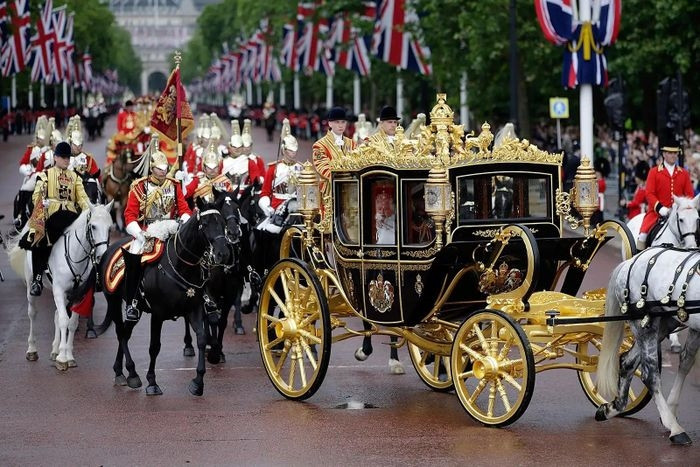
The coronation of King Charles III will take place on May 6 at Westminster Abbey in London.
The ceremony is a major symbolic event, when the British royal family and state jointly crown a new monarch as their leader, completing the transition of royal power.
For many Britons, the May 6 event will be the first, and possibly only, coronation they will witness in their lifetime. Priceless royal treasures, carefully kept in the Tower of London, will be on public display.
Royal carriage
The coronation begins with King Charles and Queen Camilla travelling from Buckingham Palace to Westminster Abbey. The King will be travelling in the Diamond Jubilee carriage, drawn by six Windsor grey horses. The carriage was built in Australia in 2010 and delivered to the British royal family in 2014.
However, after the coronation, King Charles and Queen Camilla will return to Buckingham Palace in the Gold State carriage. The carriage was built in 1762 and has been used in every coronation since King William IV in 1831. The Gold State carriage is 7m long, 3.6m high, weighs 4 tons, and has many details made of solid gold.
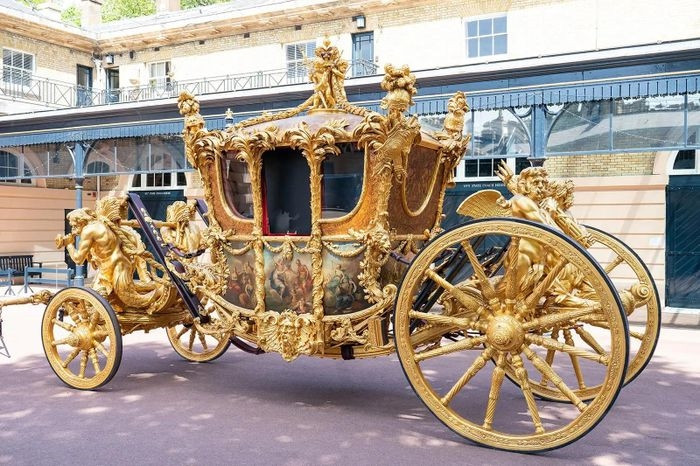
Gold State stagecoach since 1762
"There are very few royals who still have carriages of this age. Therefore, this is a treasure worth seeing," said the British royal family.
The coronation is scheduled to begin at 11am (local time) and last for about two hours. Leaders of the major religions in Britain such as Buddhism, Hinduism, Judaism, Islam and Sikhism will lead the guests into Westminster Abbey, followed by representatives of the territories that consider King Charles as their head of state.
King Charles and Queen Camilla will be accompanied by four servants during the coronation, including Prince George and Queen Camilla's three grandsons, Gus, Louis Lopes and Freddy Parker Bowles.
Archbishop Justin Welby of Canterbury, who presided over the coronation, said the event would follow traditions but also include "new elements to reflect the diversity of modern society" in Britain.
While the royal family and the Anglican Church have attempted to incorporate elements of modernity, the core components of the traditional coronation ceremony remain the same, including the acknowledgment, oath, anointing, investiture, crowning, coronation, and taking of the oath of allegiance.
Priceless antiques
The first ritual of the ceremony is "acknowledgement". King Charles will stand on a special platform at Westminster Abbey, presenting himself to all the guests at the abbey as well as to the entire British people.
The king will then receive a Bible and take the coronation oath, a ceremony administered by Archbishop Welby. The king will swear to rule by law, to administer justice and to be merciful.
After the oath is taken, the king is anointed. During this ceremony, Archbishop Welby pours holy oil from the Ampulla, a vessel shaped like an eagle, into the silver-plated Coronation Spoon. The holy oil is then poured over King Charles' head.
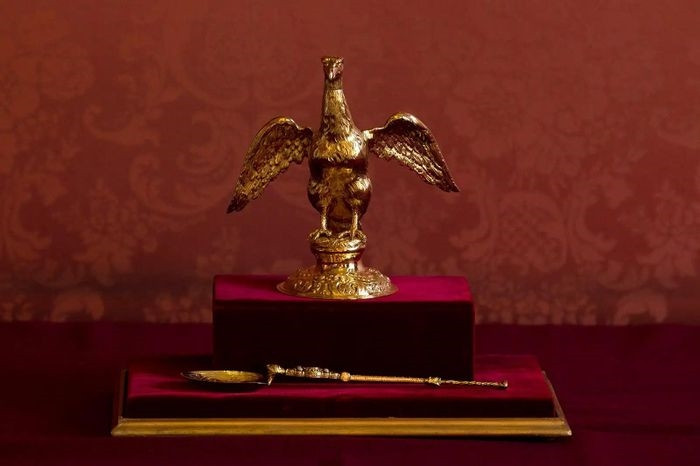
Ampulla and Coronation Spoon
The Coronation Spoon dates from the 12th century and is the oldest surviving artifact used in the coronation of King Charles. However, the original Ampulla was most likely melted down in the past. In 1661, a new one was created for the coronation of King Charles II.
After the anointing ceremony comes the coronation ceremony. King Charles will be dressed in gold robes and presented with royal relics, including the Jade Sword. The sword was made in 1820 and was first used at the coronation of King George IV.
The Jade Sword has a steel blade, a gold hilt inlaid with precious stones such as emeralds, rubies, sapphires and diamonds. The precious stones together create different motifs such as roses, oak leaves, acorns, lion heads. The sword symbolizes the spirit of chivalry, and was blessed by Archbishop Welby before being presented to the king.

The British Royal Sword
Another royal relic that will appear is the Imperial Jade. The pearl has appeared at every coronation since 1661, symbolizing the power of the royal family and the Catholic world.
The Jade Emperor is made of two hollow gold spheres held together by an elaborate band of jewels and various precious stones. The jade is divided into three parts, representing the three continents discovered in medieval times.
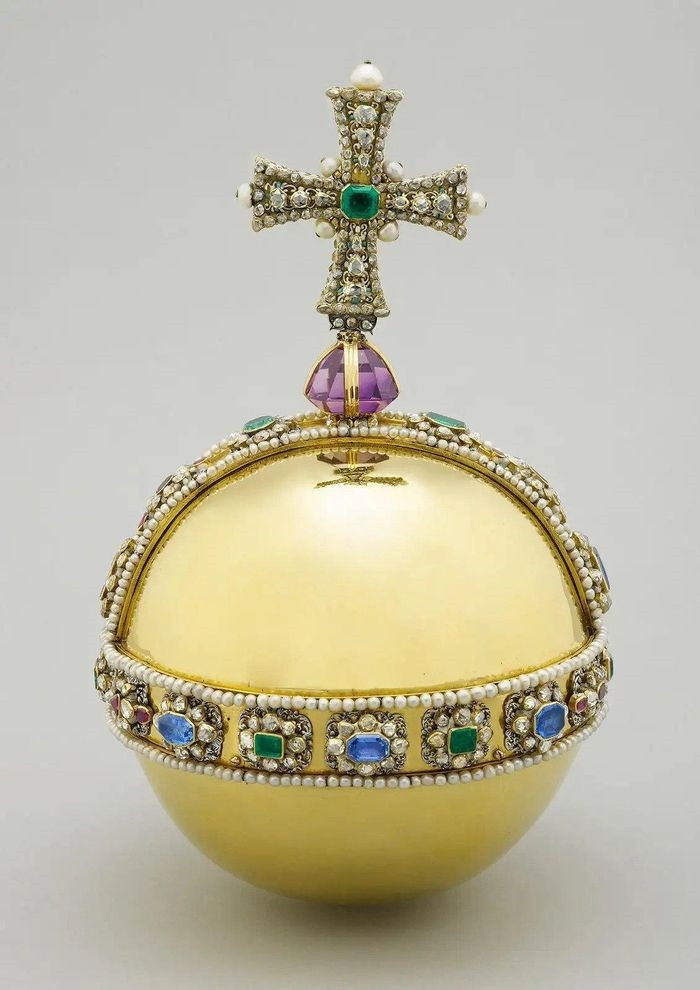
The Jade Emperor of the British Royal Family
The Jade Emperor is encrusted with 365 diamonds, 18 rubies, 9 emeralds, and 9 sapphires. The most valuable part of the Jade Emperor is the deep amethyst at the top of the band.
During the coronation, King Charles will be presented with the Sovereign Cross Scepter. This scepter is a symbol of power and wise rule. Since its original design, the scepter has undergone several modifications, most notably when it was set with the Cullinan I diamond in 1911. Nicknamed the "Great Star of Africa", the diamond was mined in South Africa and transferred to the British royal family in 1905.
The crowning culmination of the entire coronation ceremony is the crowning ceremony. The British royal family owns 13 crowns, but the most revered crown is the St. Edward's Crown. King Charles will only wear this crown once, at his coronation.
The Crown of St. Edward was made for the coronation of King Charles II in 1661. At the top of the crown is a jewel and a cross representing the Catholic world, weighing about 2.23 kg, made of gold and set with precious stones.
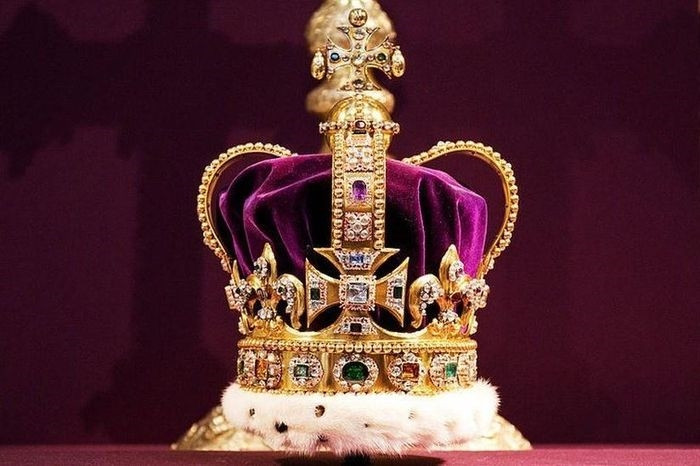
St. Edward's Crown
The base for the crown's crown is made up of solid gold bands bolted together to form the crown's body structure. The gold bands are decorated with 444 precious stones, including rubies, emeralds, amethysts, sapphires and other gemstones. Inside the gold-gem structure is a purple velvet cap and mink fur strap.
King Charles will also sit on the St. Edward's Throne, a 14th-century artifact. The throne is made of Baltic oak and is decorated with motifs of animals, birds and plants on a gilded background.
Westminster Abbey describes St Edward's Chair as "one of the most precious and famous pieces of furniture" in the world. St Edward's Chair is in remarkably good condition despite being over 700 years old.
After the coronation ceremony at Westminster Abbey, King Charles III and Queen Camilla will return to Buckingham Palace to receive a royal military welcome. Finally, the king and queen will perform the traditional ceremony of waving to the people from the balcony, while 60 army fighter jets fly overhead.
According to Zing